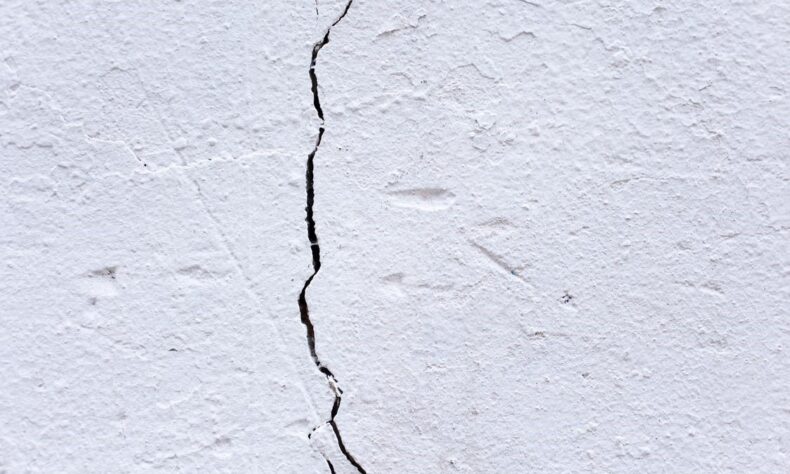
Wall cracks are something that homeowners often dread, if only because they’re so difficult to pinpoint. There are some obvious causes of wall cracks, such as temperature changes or normal settling, but there can also be more serious causes. In this article, you’ll learn the common causes of wall cracks and how to tell whether they need further attention (or even professional help).
Temperature changes
A common cause of wall cracks is temperature changes. The expansion and contraction of the house’s foundation is a normal process, but it can cause the drywall to crack if the temperature change is sudden or extreme.
To prevent this type of damage, there are several things you can do:
- Use insulation in your attic during winter so that the temperature doesn’t fluctuate as much. It’s also recommended to insulate basement walls with fiberglass batts if you’re going to be using them for storage instead of living space.
- Seal off vents that lead outside by installing weather stripping around doors and windows, so heat doesn’t escape through them.
- Keep an eye out for any signs of moisture damage in your home by checking for mould growth on ceilings or walls; moisture accumulation under sinks or toilets; dampness on carpeting next to floors; stains around windows and doors where water may have been leaking into your home; wet spots on ceilings over bathrooms (from condensation); etcetera – all these are signs something might be wrong!
Foundation
If you want to know the underlying cause of your wall cracks and what you can do about it, it’s helpful to understand what causes foundations. Foundations are there to support the walls of your home, which means they need to be strong enough to support the weight of all the materials in a house. The most common reasons for foundation damage include:
- Poor soil conditions. This can mean clay or sandy soils that don’t provide a firm base for building on top of them. It also means shallow soil with lots of water close to the surface—the water makes it harder for concrete slabs on top of them (or any other material) to stay in place without extra reinforcement, like piles driven into the deeper ground at strategic points throughout each slab’s length (known as deep foundation).
- Poor drainage patterns throughout your property lead down towards where your house is built; if there isn’t enough slope in this direction then heavy rains will pool around your building and cause seepage through any cracks that have formed in its structure over time due to age/wear-and-tear or poor construction techniques by previous owners–causing cracks between bricks/blocks etc. within walls themselves!
Settlement Six major causes
Settlement is the process of the ground sinking under the weight of a building. As you may have guessed, it’s caused by the weight of your house, along with whatever else is on top of it (construction equipment and trucks). The soil around a new home can be heavy when wet, causing it to sink into place as time goes on. This process can lead to cracks in the drywall over time.
Water Damage Six major causes
The most common cause of cracks in walls is water damage. This can happen if you have a leaky pipe or a faulty guttering system on your property. In this case, you should contact an experienced plumber as soon as possible so that they can find out where the leak is coming from and fix it for you. You may also want to call in an experienced roofer who can check whether there are any leaks in your roofing system or roof tiles.
The quality of the walls in the house will affect your daily life, so it is important that you regularly maintain and repair the damage. In that case, the best decision is to invest in house rendering, which is done by professionals, such as Hi Cement Rendering company.
Improper installation of Drywall
One of the most common causes of wall cracks is faulty installation. That means using the wrong tools and materials, applying the adhesive improperly, using fasteners that aren’t heavy-duty enough to support the load they carry, failing to tape joints properly, or not using drywall compound correctly.
Incorrect fasteners: Drywall is quite lightweight compared to the loads it takes on when installed in a house or building. So it’s important that you use screws that are designed specifically for this purpose (and not just any screws from your local hardware store).
Inadequate adhesive application: Tacking down loose edges with more adhesive before applying additional layers will help prevent cracks from forming at those junctures later on down the line when stress increases due shifting conditions within your walls/ceilings/floors etcetera; however sometimes even though adhesives might seem strong enough initially there could still be some issues occurring later due to moisture levels changing over time which would cause this type of problem anyway!
Poorly installed windows and doors
No matter if you go for modern windows or still stick to traditional ones. Poorly installed windows and doors are another common cause of wall cracks. If a window or door is not properly installed, it may not seal properly against its frame or threshold, leaving gaps that allow air infiltration through walls. To fix this issue, simply reseal gaps around windows and doors using caulking.
While cracks in the walls are often unavoidable, there are many ways to prevent major damage from occurring. One of the easiest ways to do so is by observing your home for possible problems and having them fixed by professionals as soon as possible.






